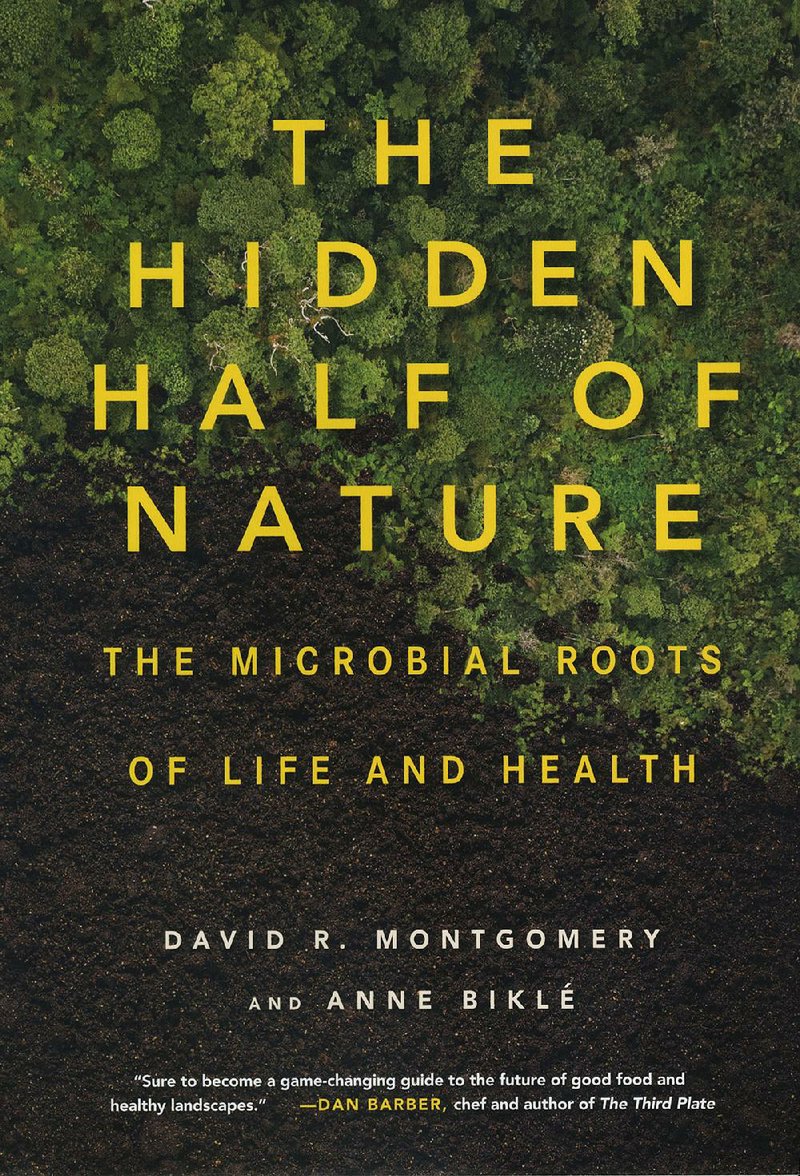The Hidden Half of Nature: The Microbial Roots of Life and Health by David R. Montgomery and Anne Bikle (W.W. Norton & Co.), 320 pages, $26.95
Is this another pop-science book about the poor misunderstood bacteria?
Yes, but this one is only in part concerned with correcting humanity's alarmist views of the microbes that call our bodies home.
Biologist Anne Bikle does contribute an extensive history of how medical science came to view all microbes as germs, and she does make the case for taking a less scorched-earth approach to humanity's Old Friendly no-see-ums. But also, her husband, David R. Montgomery, a MacArthur fellow and professor of geomorphology, explains the evolution of human awareness of the microbes in soil.
In other words, it's a book about how we have misunderstood bacteria in the dirt as well as those in our bodies.
Chapters written by him alternate with chapters written by her, and at the end of the book, both strains of thought come together in chapters asserting the potential benefits of eating an omnivorous diet rooted in plants -- flexitarian but weighted toward produce -- produce grown in gardens tended by biologists rather than chemists.
But it has 320 pages. That's a lot of pages. Will reading all those pages change my life?
If you're a gardener, it will make you think twice about pouring fertilizer from a box around your plants.
And Bikle's explanation of catastrophes wrought by overuse of antibiotics will, for sure, provide another incentive for doing your best to stay healthy: saving antibiotics for when they are truly needed.
And that could change the way you shop for certain products at the grocery store.
Tell me they don't advocate nonmedical approaches to the epidemics of death that antibiotics have saved us from.
Rest assured, they don't advocate turning your back on antibiotics. But they explain why these drugs come with a price: "When you need them, they are truly miraculous," Bikle writes. "And yet, overlooked in the rush to
embrace these truly wondrous drugs was the evolutionary implication of a 20-minute lifespan.
"An antibiotic never kills all the bacteria at the root of an infection. The bacteria that survive an antibiotic course go on to reproduce as their mates disintegrate around them. Most importantly, the survivors pass on the genes that conferred the trait(s) that allowed them to successfully dodge the antibiotic. ... Globally, about 90 percent of all antibiotics used are given to animals with no apparent infection. This is an even more effective recipe for promoting development of drug-resistant bacteria, and it's working."
These authors are not anti-antibiotic and they are also not anti-vaccination. But Bikle's explanation of the personalities and science-society politics that played into the development of the most successful vaccines helps her assert that focusing on the eradication of a few death-dealing microbes inadvertently persuaded humanity that all microbes are dangerous, when they're not.
This book suggests that people should be wary of harmful microbes, while nurturing the good ones.
If I've read other books about the "new science" of the microbiome, is there any reason I should also read this one?
The weaving together of the two strains of inquiry -- the history of our thinking about microbes in soil and about those in guts -- presents a different, coherent way of looking at both.
ActiveStyle on 11/16/2015
